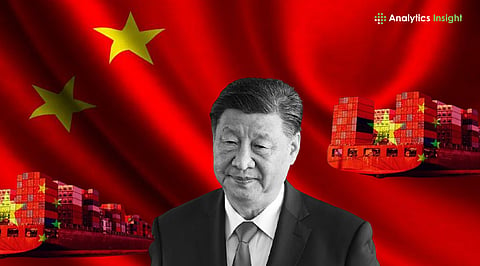

Despite continuous tariffs and political tensions, China’s exports to the United States remain resilient. This strength highlights Beijing’s continuing leverage over global supply chains and President Xi Jinping’s enhanced standing in discussions over trade.
More than six months into Donald Trump’s renewed trade war, roughly $1 billion worth of Chinese goods continues to cross the Pacific daily. In fact, shipments from China to the US increased in September compared to August, even as total bilateral trade has fallen by double digits this year.
This underscores the difficulty of relocating US factories away from Chinese manufacturing, especially in critical sectors such as electronics, rare earths, and industrial materials.
Economists Chang Shu and David Qu of Bloomberg noted that China’s role in global supply chains gives it “some bargaining power with US importers,” emphasizing that realigning production will take years, not months.
The sustained export strength comes as Xi’s government prepares for another round of trade talks aimed at extending the 90-day tariff truce that expires in November.
In just the third quarter, China exported more than $100 billion worth of goods to the US, leading to a bilateral trade surplus of $67 billion, a key contributor to China’s domestic economic stability.
Although Trump has threatened to initiate more tariffs and has identified rare earths, fentanyl, and soybeans as primary negotiating priorities, analysts believe that China’s continued dominance in certain supply chains restrains the impact of US trade restrictions.
Chinese companies have come up with creative ways to keep the flow despite higher tariffs. For instance, some are moving containers through countries like Mexico and Vietnam, making it possible for the importers to take advantage of lower customs valuations or to avoid full tariff payments.
According to ANZ strategist Zhaopeng Xing, the practice persists partly because US customs authorities lack the resources to monitor every transaction.
At the same time, Chinese e-commerce exports remain robust. Since the US closed the “de minimis” duty-free loophole in May, China has shipped $5.4 billion worth of small parcels to American consumers.
Meanwhile, B2B shipments surged to $201 million in September, suggesting Chinese exporters are adapting by bulk-shipping products before breaking them down in the US.
Also Read: Trump Issues Stark Warning to China: ‘Fantastic Deal or 155% Tariffs’ Ahead of Xi Meet
Exports of gaming consoles and televisions from China to the US have plummeted as major brands shift manufacturing to Southeast Asia. This year, China’s overall exports to the US dropped below $320 billion.
While trade volumes fall, China’s capacity to sustain $1 billion in daily exports reflects the limits of US tariff power. For now, Beijing has significant leverage, which Xi Jinping is likely to use in the next round of negotiations.
